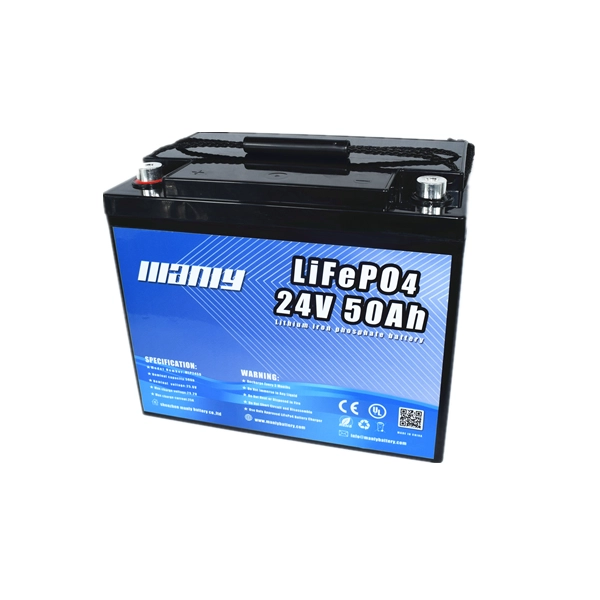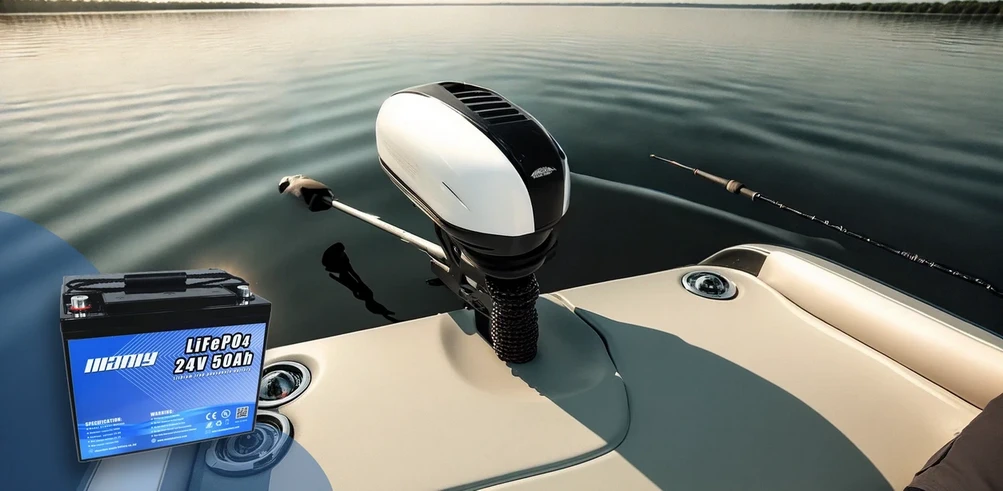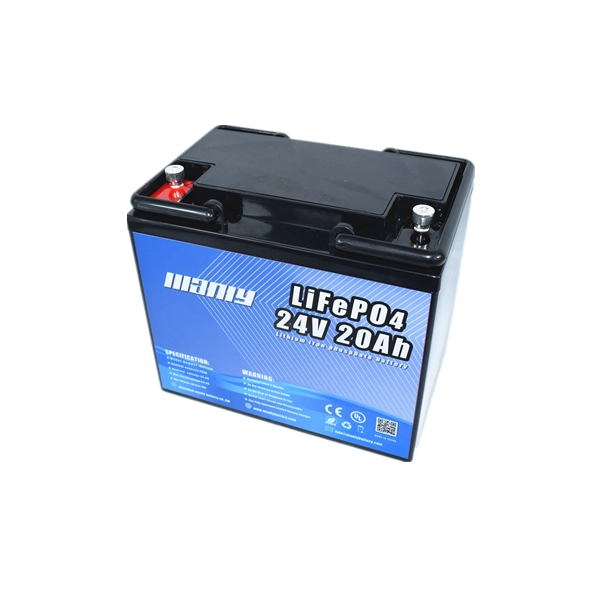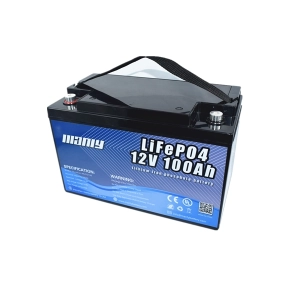2024 What is a 24 volt battery used for?
Table of Contents

What is a 24 Volt Battery?
What is a 24 Volt Battery?
A 24 volt battery delivers 24 volts of electrical power. These batteries are not as common as 12-volt ones and can be more challenging to find. However, they are advantageous in that a single 24-volt battery occupies less space than multiple batteries connected to achieve the same voltage. This makes them ideal for situations where space is at a premium.Advantages of a 24 Volt System
Using a 24 volt battery system offers several benefits:- Smaller Wires: A 24-volt system requires less current to deliver the same amount of power as a 12-volt system, allowing for the use of smaller diameter wires. This reduces both the cost of wiring and the space needed for installation.
- Efficient Power Transmission: Higher voltage systems like 24 volts are more efficient in power transmission, generating less heat and losing less energy over long distances. This is why high-voltage power lines are used for electricity transmission.
Disadvantages of a 24 Volt System
Despite the benefits, there are some drawbacks to using a 24 volt battery system:- Converters Needed: Many devices and appliances are designed for 12 volts. Using these with a 24-volt system requires a converter to step down the voltage, which adds to the cost and results in a small energy loss.
- Limited Availability: Components and equipment designed to run on 24 volts are less common than those for 12 volts. This can make sourcing parts more difficult and potentially more expensive.
- Charging Complexity: If your system's chassis operates on 12 volts, charging a 24-volt battery can be complex. A DC-DC converter is needed to charge the 24-volt battery from a 12-volt alternator, adding both complexity and expense.
Practical Uses
24 volt batteries are useful in various applications where their benefits can be fully utilized:- Trolling Motors: A 24 volt trolling motor battery provides more power and longer run times, making it ideal for fishing boats.
- Power Wheels: Upgrading to a 24 volt lithium battery power wheels setup enhances speed and performance, providing a more exciting experience for kids.
- Marine Use: A marine 24 volt battery is efficient for boats, reducing wiring costs and space while ensuring reliable power.
Charging a 24 Volt Battery
Properly charging a 24 volt battery is crucial for performance and longevity. Use a 24 volt battery charger specifically designed for the type of battery you have, such as lithium or AGM. Always follow the manufacturer’s instructions to avoid overcharging or damaging the battery.Installation Tips
When setting up a 24 volt battery system, ensure all connections are secure. If using multiple batteries, understand how to hook up 24 volt batteries in series correctly. For best results, follow guidelines for wiring batteries for 24 volt systems, which include using the appropriate wire gauges and ensuring safe, secure connections.What are 24V Batteries Used For?
Trolling Motor
A 24 volt battery is commonly used for trolling motors, which are essential for fishing boats. Here’s why a 24 volt battery for trolling motor is a great choice:Power and PerformanceA 24 volt trolling motor battery provides more thrust compared to a 12 volt battery. This extra power is crucial for larger boats, especially in windy or harsh conditions. The higher voltage allows the motor to run more efficiently, using half the amperage, which means less heat and better energy use.Battery Type and SizeWhen choosing a 24 volt battery for trolling motor, it's important to select the right type and size. A 24 volt deep cycle marine battery is often recommended. Deep cycle batteries are designed to provide a steady amount of power over a long period, which is ideal for trolling motors. For example, a Group 27 battery with at least 110 amp-hours is a good choice. This ensures longer run times and better performance.Charging and MaintenanceUsing a suitable 24 volt battery charger is key to maintaining your battery's health. Make sure to match the charger with the battery type to avoid overcharging or damage. Regularly check the connections and charge levels to keep the battery in top condition.Energy EfficiencyThe 24 volt trolling motor battery is more efficient because the motor runs at a lower amperage. This means it can operate longer on a single charge, providing more hours of fishing time without needing to recharge frequently.In summary, a 24 volt battery is an excellent choice for trolling motors due to its power, efficiency, and ease of use. By selecting the right battery type and maintaining it properly, you can enjoy reliable and long-lasting performance on your fishing trips.
Power Wheels
A 24 volt battery is a great choice for children's power wheels, offering numerous advantages over the more common 12-volt batteries.Speed and PerformanceOne key benefit of a 24 volt power wheels battery is the increased speed. Power wheels with 24 volt batteries can travel up to 6 mph, which is faster than the 4 mph limit typical of 12-volt models. This gives kids a more thrilling driving experience.Extended PlaytimeA fully charged 24 volt battery allows for longer playtime, typically between 60 to 90 minutes. This duration can vary based on factors such as the type of terrain, the child's weight, and how often the car is used. This means kids can enjoy their power wheels for a longer period without needing frequent recharges.Battery LongevityHigher voltage generally translates to longer battery life. With a 24 volt battery, power wheels can operate for a longer duration on a single charge compared to their 12 volt counterparts. This is especially beneficial for extended outdoor play sessions. However, it is important to note that the 24 volt battery will require a longer charging time than a 12-volt battery.Upgrading to 24VConverting a 12 volt power wheel to a 24 volt battery system is straightforward but involves several steps:- Wiring Batteries for 24 Volt: Replace the existing wiring with 12-gauge wires to handle the increased voltage and prevent overheating.
- How to Hook Up 24 Volt Batteries: Connect two 12-volt batteries in series to form a 24-volt system by linking the positive terminal of one battery to the negative terminal of the other.
- Safety Precautions: Use 20 amp fuses and ensure all connections are tight and secure. Insulate any exposed wires to avoid short circuits.

Choosing the Best 24 Volt Lithium Ion Battery for Your Needs
Lithium Ion vs. Lead Acid
When selecting the best 24 volt battery technology, it's essential to compare 24 volt lithium ion battery and lead acid batteries. Each type offers unique benefits and drawbacks.Longevity and EfficiencyA 24 volt lithium ion battery typically lasts much longer than a lead acid battery. These lithium batteries can handle more charge cycles, meaning they need replacement less often. This results in cost savings over time and reduces waste, as proper disposal of old batteries is required. Lithium ion batteries are around 95% efficient, while lead acid batteries are about 80-85% efficient.Performance in Tough ConditionsLithium ion batteries are more durable and perform better in extreme environments. They handle severe temperatures and rough usage better than lead acid batteries. For instance, a 24 volt lifepo4 battery can work in temperatures as low as -20°F (-29°C), making it ideal for both summer boating and winter ice fishing.Power Wheels
Speed and PerformanceA 24 volt lithium battery power wheels can provide higher speeds and better performance. Power wheels using 24-volt batteries can go up to 6 mph, which is faster than the 4 mph limit of 12-volt models. This makes the ride more exciting for kids.Extended PlaytimeA fully charged 24 volt battery offers longer playtime, usually between 60 to 90 minutes. This can vary based on terrain, the child's weight, and usage frequency. This longer playtime means kids can enjoy their power wheels without frequent recharging interruptions.Battery LongevityHigher voltage usually means longer battery life. With a 24 volt lithium ion battery, power wheels can run longer on a single charge compared to 12-volt batteries. This is great for extended outdoor play sessions. However, it’s important to note that these batteries require longer charging times.Trolling Motor
Power and PerformanceA 24 volt lithium battery for trolling motor provides more thrust than a 12-volt battery, which is crucial for larger boats, especially in windy conditions. The higher voltage allows the motor to run more efficiently, using less amperage, which means less heat and better energy use.Battery Type and SizeChoosing the right 24 volt battery for trolling motor involves selecting the appropriate type and size. A 24 volt deep cycle marine battery is often recommended. Deep cycle batteries provide steady power over long periods, ideal for trolling motors. For example, a Group 27 battery with at least 110 amp-hours is a good option, ensuring longer run times and better performance.Charging and MaintenanceUsing a suitable 24 volt battery charger is essential to maintain your battery’s health. Match the charger with the battery type to avoid overcharging and damage. Regularly check connections and charge levels to keep the battery in top condition.Setup and InstallationProper setup of your 24 volt battery is vital for safety and performance. For a 24 volt battery hook up, you can connect two 12-volt batteries in series or use a single 24-volt battery. This setup saves space and weight on your boat. Ensure all connections are secure and follow the manufacturer’s guidelines for wiring batteries for 24 volt systems.Energy EfficiencyA 24 volt lithium battery for trolling motor is more efficient as it runs the motor at a lower amperage. This means the motor can operate longer on a single charge, providing more fishing time without frequent recharging.Choosing the Right 24 Volt Battery Charger
Power RequirementsWhen choosing a 24 volt battery charger, the type of power it uses is essential. Most chargers for home use plug into a standard 110-volt outlet, but some high-performance models need a 220-volt outlet. If you need to charge multiple batteries often, a 220-volt charger might be a better choice.Battery TypesNot all chargers are compatible with every battery type. Some chargers are only designed for AGM or flooded lead-acid batteries. Make sure your 24 volt battery charger matches your battery type. For instance, a 24 volt lithium ion battery requires a charger specifically made for lithium batteries to ensure safe and efficient charging.Smart FeaturesModern chargers often include smart features for improved safety and convenience. Look for chargers with digital displays that provide clear charging status. Many also have sensors to detect charging issues and a "tending" mode to maintain a full charge without overcharging.Selecting the Correct Charger
- Identify the Battery Type: First, determine the type of battery you have. Common types include Lithium, AGM, GEL, and flooded or wet batteries. The battery type is typically indicated on the battery label. Ensure your charger is suitable for your battery type. For a 24 volt lithium ion battery, choose a charger designed for lithium batteries.
- Determine the Battery Size: Next, identify the battery’s size, measured in Ampere hours (Ah). For example, a 100Ah battery needs a charger with a minimum output of 10 amps. Generally, the charger should be 10-20% of the battery’s Ah rating. For instance, a 100Ah battery would require a charger with 10-20 amps.
Understand Your NeedsDecide if you need the charger for regular charging or battery maintenance. Regular charging is for recharging a dead battery, while maintenance charging keeps a battery topped up, also known as trickle charging. If you use your device infrequently, a maintenance charger is ideal.Wiring and InstallationProper 24 volt battery hook up is crucial for safety and efficiency. For a 24 volt battery setup, you can connect two 12-volt batteries in series or use a single 24-volt battery. Secure all connections and follow the manufacturer’s guidelines for wiring batteries for 24 volt systems.Energy EfficiencyUsing an efficient 24 volt battery charger is important to maximize battery life. Chargers made for 24 volt lithium ion battery are particularly effective, providing the precise charge needed for lithium batteries, which helps prevent overcharging and extends the battery’s lifespan.




















